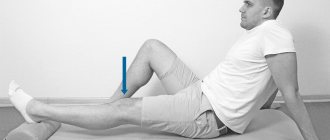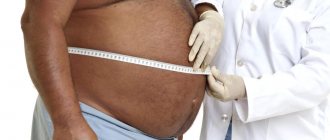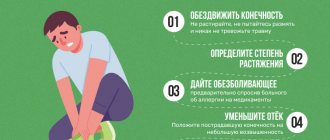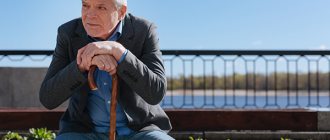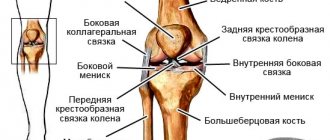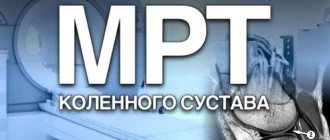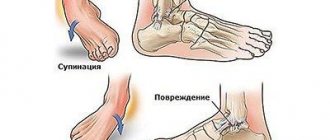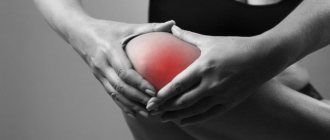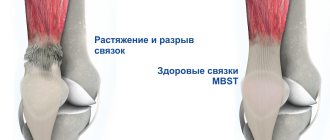Sevmassage » Articles
Your knees are some of the strongest joints in your body , they support your body weight, providing stability when walking, running, turning, jumping and lifting.
Your knees also allow you to move to sit and stand. Unfortunately, your knees are also the most commonly injured joints in your body. The knee joint is formed at the intersection of four bones , the femur, tibia and fibula, and the patella, which slides over the top of the joint as you bend your knee.
Your knees are supported and completely stabilized by the surrounding ligaments and muscles. The main ligaments are: the cruciate ligaments, which run through the anterior (front) and posterior (back) knees, and the collateral ligaments are located on both sides of the knee. If you follow sports, you've probably heard of athletes with knee injuries to the anterior cruciate ligament, which connects the femur to the lower leg and runs just under the kneecap.
In addition to ligaments, your knees are supported by several large muscle groups. The quadriceps are the large muscles on the front of the thigh that straighten the knee when walking or standing. On the back of your leg, your hamstrings run behind your knee and attach to two leg bones, the tibia and fibula, and are responsible for the bend of your knee. The remaining muscles associated with the support and movement of the knee are the hip contractors (outer thighs) and hip adductors (inner thighs), the calf muscles, and the buttocks.
Why an anatomy lesson? Besides direct injury, the main cause of knee pain is instability caused by weak muscles and ligaments surrounding the joint. Want to strengthen and stabilize your knees and reduce knee pain while increasing your range of motion? Strengthen supporting muscle groups.
You can reduce or eliminate knee pain and improve your strength and mobility through exercise. The following low-impact exercises have been selected to improve your strength and restore balance to the muscles that support and stabilize your knees:
Wall slides
Strengthens the quadriceps and the tissues and ligaments above your knee.
How to do it: Stand 30-40 cm from the wall and lean back until your back touches the wall. Place your arms at your sides with your palms facing the wall for support. Slowly lower the wall until your knees reach a 30-degree angle and hold this position for 10-15 seconds, slowly return to the vertical position and repeat at least 5-10 times.
Precautions: Don't lower your body to the point that your knees go beyond your toes, if they do, stop and move your feet a little further away from the wall.
Sitting straighten your legs
Strengthens quadriceps and hip flexors.
How to do it: Start by placing two chairs facing each other, sit in one and place one foot on top of the other. Now straighten that leg and lift your leg 4-6 centimeters from the chair and hold it for at least 5-10 seconds and then relax. Do this exercise 5-10 times for each leg and try to extend the time you keep your leg off the chair. Variations: If chairs are not available, you can perform this exercise on the floor with one leg straight and the opposite leg bent on the floor. As you get stronger, you can add ankle weights to increase the difficulty.
Sitting bent leg raises
Strengthens the quadriceps just above the knee and the ligaments surrounding the joint.
How to do it: While sitting in a chair, straighten one leg in front of you, but stop without covering your knee. Hold your raised leg in this position for one minute, this will also engage and strengthen your hip flexors. Now, without moving your hip, bend at the knee until your leg forms a 45-degree angle and hold this position for another 30 seconds. Relax and repeat with the opposite leg. Replace until you complete 4 reps on each leg.
Hip abduction
Strengthens the hip abductor muscle
,from the center line.
How to do it: Lie on your side with your legs bent and your arm bent at the elbow to support your head. Bend your bottom knee to support your body and, keeping it straight, lift your top leg (at the top) slowly up and away from the mat. Hold at the top for 5-10 seconds, slowly lower and repeat for 12-15 repetitions.
Cautions: Do not swing or lift your leg, do not use momentum. Slowly lift, hold, lower and repeat. Once you get stronger, consider adding ankle weights.
Hamstring strain
Strengthens your hamstrings and the tissue behind the knee.
How to do it: Grasp the back of a chair or low wall and bend one knee as you bring your foot toward your butt. Focus on keeping your knee pointing to the floor throughout the movement. Hold your leg near your buttocks for 5-10 seconds and then slowly lower your leg until it just barely touches the floor and do 12-15 repetitions and up to 1-3 exercises for each leg. Again, as you get stronger, you can add ankle weights to increase the difficulty and effectiveness.
Initial set of physical exercises (5-7 days after surgery)
After discharge from the hospital, the patient begins to gently perform the exercises prescribed by the doctor. The exercise therapy complex is developed individually. At this stage, there are no uniform exercise options for all patients.
As a rule, drug rehabilitation continues at the initial stage. In particular, the patient takes non-steroidal anti-inflammatory drugs, painkillers, and, if necessary, blood thinners. In this case, it is important to ensure that the operated leg is positioned as high as possible and if swelling appears, cold should be applied to the knee immediately.
It is mandatory to wear a knee pad or elastic bandage. If you are prone to blood clots, your doctor will recommend wearing compression stockings.
Step by step
Strengthens your entire lower body and all the muscles that support your knees.
How to do it: Stand in front of a sturdy box, bench or step 30 to 40 cm high and place one foot on the step and slowly rise up, keeping your knee aligned above your foot. Step up with the other leg until you take a step, then step one leg back and down, then the other. The sequence should be up, up, down, down. As you get stronger, you can increase your step height and difficulty. Perform your activities for a minimum of 1 minute and gradually increase the time with each workout.
Cautions: If you experience knee pain or are unable to maintain a steady pace for the desired time, reduce your stride height.
stationary bike
Strengthens the hamstrings and knee ligaments while increasing non-impact range of motion.
How to do it: Your seat needs to be adjusted to the correct height to ride your bike safely and efficiently, your hips will contract. If you go too low, you can hurt your knees and shorten your muscles (and range of motion). Make sure that when your foot is at the bottom of your pedal stroke, your leg is almost straight but your knee is maintaining a 15 degree angle. Your starting cycling time should be 10 minutes per day and add an extra minute each day until you reach your daily goal.
Knees hurt: causes of problems
In the nineties of the twentieth century, the nationally famous teacher of Chinese gymnastics Wushu Igor Grishin, better known under the pseudonym Master Go, was diagnosed with arthrosis of the knee joint.
This came as a real shock to him, but giving up was not his style. He decided that he would always have time to undergo surgical intervention and install an artificial joint, but he could try to restore the functionality of a natural one on his own, using ancient Chinese wisdom. Grishin developed his own technique called “Living Knees,” which allowed him not only to eliminate unpleasant sensations, but also to really improve his knees, after which he was able to return to sports and martial arts. He has several books to his credit, as well as a large YouTube channel, which has already helped many people return to normal life without the intervention of a surgeon.
Quadratus muscles
Strengthen the ligaments and tissues surrounding the knee and quadratus femoris muscles.
How to do it: This isometric exercise, strengthens the area around the knee without actually moving the leg or knee, and helps to fully straighten the knee. While you're lying on your back or sitting upright on the floor, keep your leg and knee straight as you extend the quadriceps muscle on the front of your thigh, and focus on pushing through your knee as you "lock" your knee straight. You will see your kneecap move upward as you tighten (squeeze) your thigh muscles. Hold for at least 3 seconds and perform 12-15 repetitions on each leg.
When do you need to strengthen your knee joints and ligaments?
The knees experience enormous stress, so they are often injured and worn out, and deformations appear in the bone tissue. Strengthening tissue is necessary not only when diagnosing damage due to a fracture or dislocation, but also as a preventive measure for many diseases. First of all, these are bursitis, a tendency to the appearance of arthritis, arthrosis, joint instability, the period after sprain or rupture of ligaments and tendons.
With the development of these diseases, the likelihood of problems with joints and ligaments increases. Physical therapy is indicated in cases where:
- movements are accompanied by crunching of joints;
- playing sports causes burning in the knees;
- the temperature around the kneecap increases;
- there is swelling and redness in this area;
- blood circulation is impaired;
- there are problems with metabolism;
- Synovial fluid accumulates inside.
Strengthening the knee joint is also required in cases where a person has suffered injuries due to which the limb had to be immobilized. Lack of movement in ligaments and tendons can lead to atrophic processes.
Excess weight is also an indication for strengthening ligaments, since excess body weight greatly overloads the knees. For the same reason, preventive exercises are also recommended for athletes who strain their knee joints due to constant physical activity.
Experts advise those suffering from diabetes mellitus, as well as other diseases that are associated with metabolic problems, to engage in special exercises.
Short arcs
Strengthens your quadriceps and surrounding ligaments, a good knee rehabilitation exercise after a knee injury or surgery.
How to do it: Lying on the floor or in bed, roll up a towel and place it under your knee. Focus on pulling your toes toward your body as you extend your quads and slowly lift your leg off the bed. Keep your knee in contact with the roller and hold your leg for 3-5 seconds and repeat 10-15 times for each knee. To increase difficulty and effectiveness, use a thicker rolled towel followed by ankle weights.
Therapeutic effect of exercise
Special therapeutic exercises will help slow down degenerative changes. The main goal of knee treatment with exercises is to maintain joint flexibility and strengthen muscles. Regular exercise significantly reduces pain.
In addition, the patient’s physical capabilities increase, and the risk in the absence of contraindications is minimal. The therapeutic effect, even after stopping classes, lasts for several months.
With proper exercise, the risk of further damage or worsening is reduced.
Seated knee march
Strengthens your quadriceps while increasing your knee flexibility and range of motion. Another good rehabilitation exercise for an injured knee joint.
How to do it: While sitting in a chair, place both feet on the floor in front of you. Raise one knee and leg slowly as you point your knee towards the ceiling, lower and repeat with the opposite leg. You walk with "high" knees while sitting to avoid pressure and weight. Continue for at least 1 minute and do this exercise any time you feel stiffness in your knees.
Previous post Exercises for correcting kyphoscoliosis of the thoracic spine
Next entry Widow's hump: what is it and how to get rid of it?
How people have improved their knees
Igor Atlasin:
For 6 years I was looking for ways to improve my health, because while serving in the army I seriously undermined my health. In particular, I constantly felt severe discomfort in the knee joint; even at rest, a dull aching pain prevented me from working and living normally. I accidentally found a video of Master Go on the Internet, tried to do the most basic rotations with my feet, and after a month I discovered that I get out of bed in the morning without any problems, and being on my feet all day no longer brings pain and fatigue. I subscribed to the channel and have been trying to follow all the teacher’s advice for almost a year. I feel that returning to a normal, full life is simply a matter of desire, and it takes a minimum of time.
Alla Shpakovskaya:
At work (factory) I mostly stand, and not as I would like, but as is more convenient. My back had been aching for a long time, but I began to notice that a crunch began to appear in my knees, then they began to ache, then the pain became unbearable. I went to see a doctor, who immediately sent me for tests, made a diagnosis and suggested intra-articular injections. I went for the procedure, it’s good that I did it on only one. It only got worse, there was no positive effect, and my sister recommended Master Go’s technique. Now I can squat with ease without hearing a crunch, the pain has subsided. Thank you very much to Igor Alekseevich for his unique complex, they will continue to develop.
